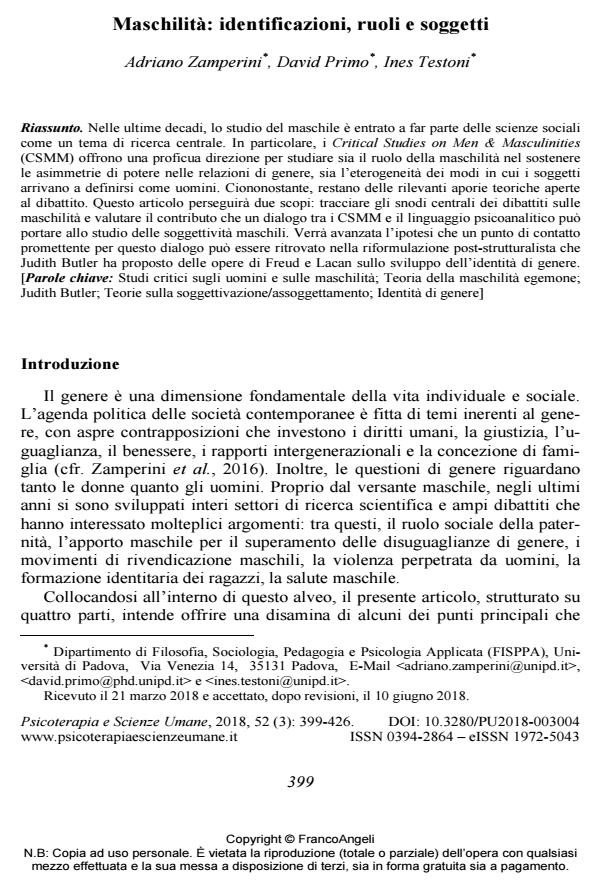Maschilità: identificazioni, ruoli e soggetti
Titolo Rivista PSICOTERAPIA E SCIENZE UMANE
Autori/Curatori Adriano Zamperini, David Primo, Ines Testoni
Anno di pubblicazione 2018 Fascicolo 2018/3
Lingua Italiano Numero pagine 28 P. 399-426 Dimensione file 207 KB
DOI 10.3280/PU2018-003004
Il DOI è il codice a barre della proprietà intellettuale: per saperne di più
clicca qui
Qui sotto puoi vedere in anteprima la prima pagina di questo articolo.
Se questo articolo ti interessa, lo puoi acquistare (e scaricare in formato pdf) seguendo le facili indicazioni per acquistare il download credit. Acquista Download Credits per scaricare questo Articolo in formato PDF

FrancoAngeli è membro della Publishers International Linking Association, Inc (PILA)associazione indipendente e non profit per facilitare (attraverso i servizi tecnologici implementati da CrossRef.org) l’accesso degli studiosi ai contenuti digitali nelle pubblicazioni professionali e scientifiche
Nelle ultime decadi, lo studio del maschile è entrato a far parte delle scienze sociali come un tema di ricerca centrale. In particolare, i Critical Studies on Men & Masculinities (CSMM) offrono una proficua direzione per studiare sia il ruolo della maschilità nel sostenere le asimmetrie di potere nelle relazioni di genere, sia l’eterogeneità dei modi in cui i soggetti arrivano a definirsi come uomini. Ciononostante, restano delle rilevanti aporie teoriche aperte al dibattito. Questo articolo perseguirà due scopi: tracciare gli snodi centrali dei dibattiti sulle maschilità e valutare il contributo che un dialogo tra i CSMM e il linguaggio psicoanalitico può portare allo studio delle soggettività maschili. Verrà avanzata l’ipotesi che un punto di contatto promettente per questo dialogo può essere ritrovato nella riformulazione post-strutturalista che Judith Butler ha proposto delle opere di Freud e Lacan sullo sviluppo dell’identità di genere.
Parole chiave:Studi critici sugli uomini e sulle maschilità; Teoria della maschilità egemone; Judith Butler; Teorie sulla soggettivazione/assoggettamento; Identità di genere
Adriano Zamperini, David Primo, Ines Testoni, Maschilità: identificazioni, ruoli e soggetti in "PSICOTERAPIA E SCIENZE UMANE" 3/2018, pp 399-426, DOI: 10.3280/PU2018-003004